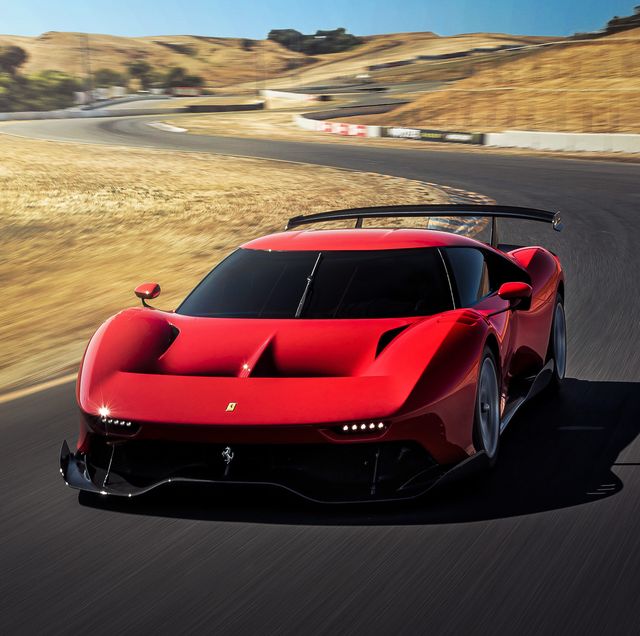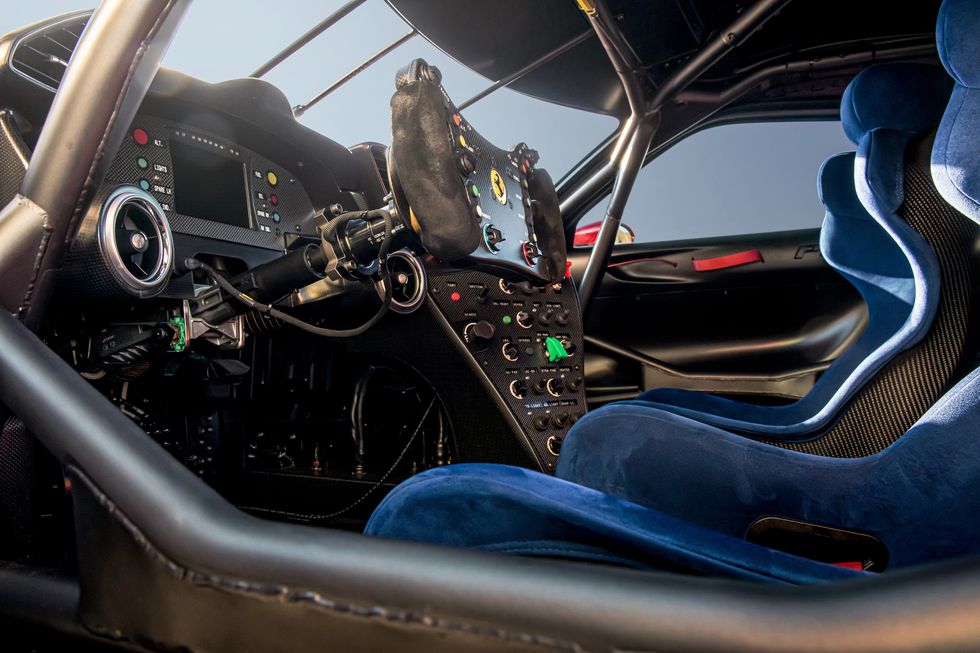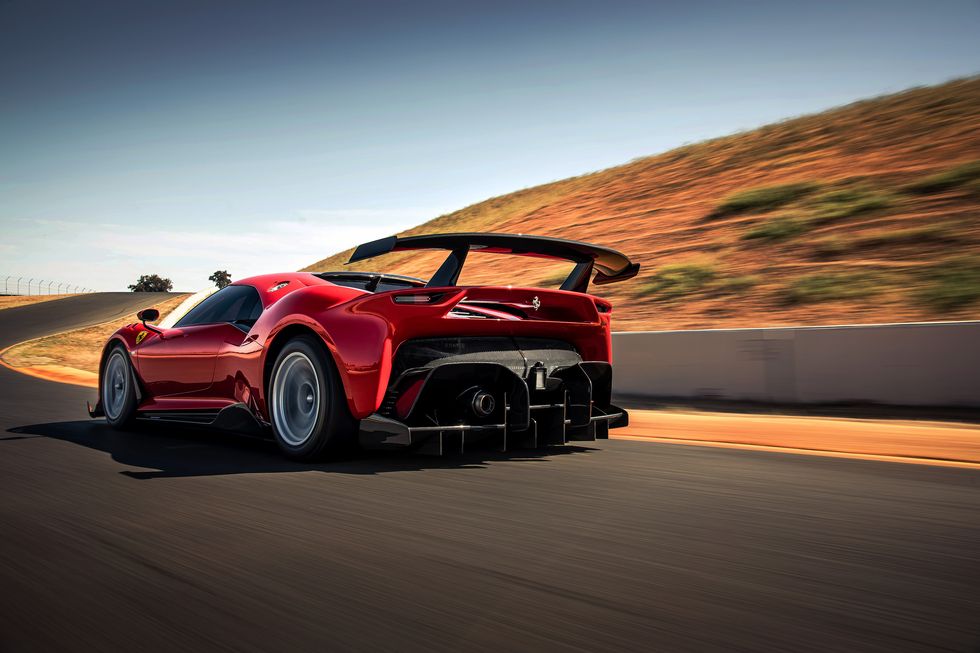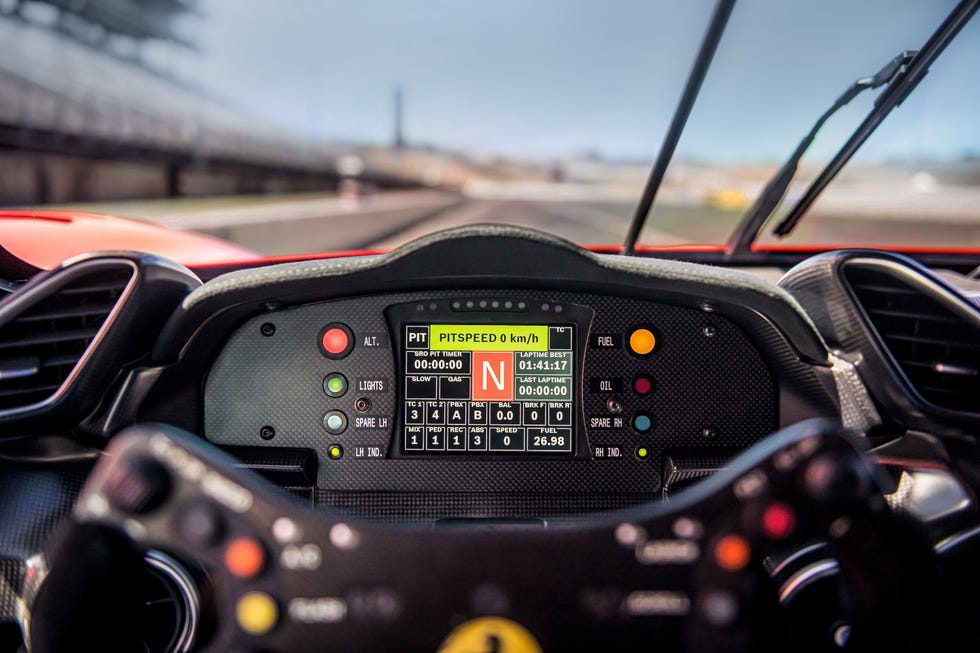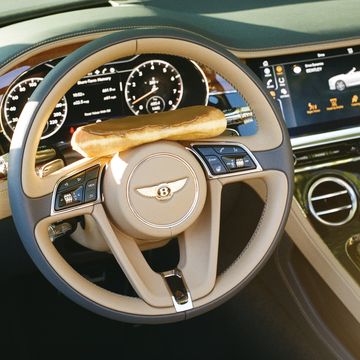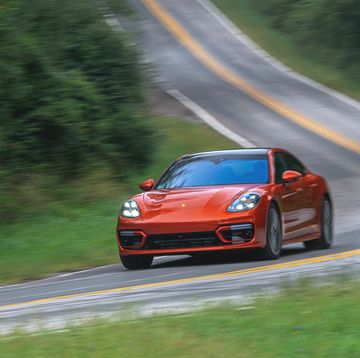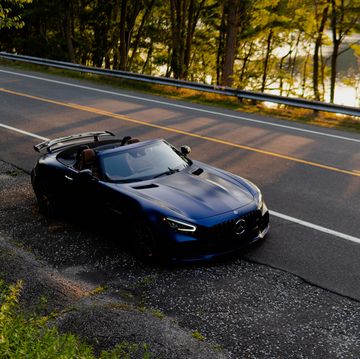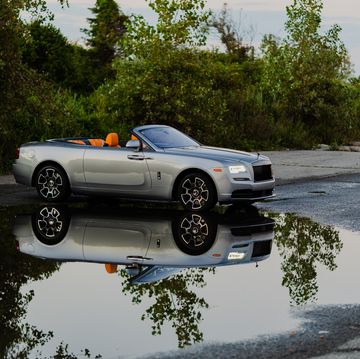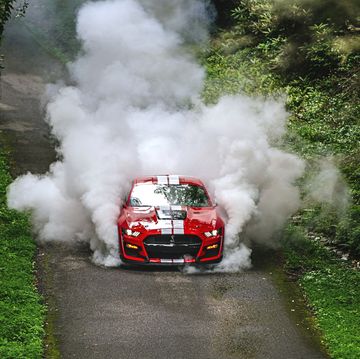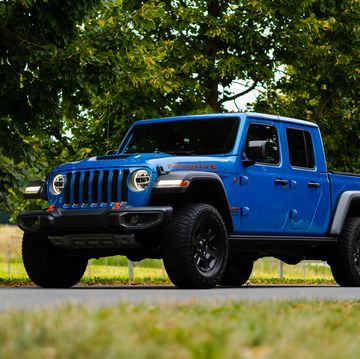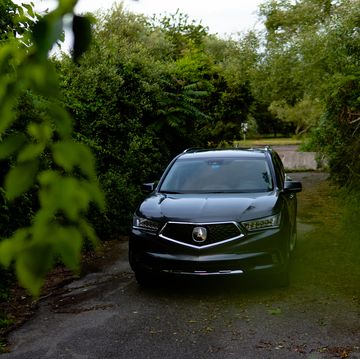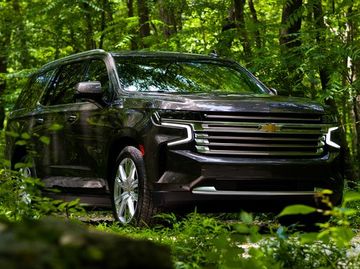The car world has rules for everything. Thousands of regulations for both street and race cars dictate precisely what can be done. Even within Ferrari’s Special Projects (SP) division, which helps customers conceive and create one-off vehicles, designs are bound by what Maranello’s engineers, designers, and marketers think is right. That last rule is likely the biggest reason why the screaming sculpture on these pages required four long years of work to complete. Like all great projects, it’s the progeny of conflict between talented people, including its Hong Kong-based owner. The P80/C breaks rules: It’s the first Ferrari SP built on a competition chassis. It’s not legal for racing or the road. It follows no rules. This is what Ferrari would build if Ferrari did only what it wanted.
This story originally appeared in the May 2020 issue of Road & Track.
New Hips, Old Heart
The P80/C is an extensively reworked and rebodied Ferrari 488 GT3 race car. It has no creature comforts save air-conditioning, it weighs just 2780 pounds dry, and it is powered by a derestricted, 3.9-liter, twin-turbo V-8. Official power figures haven’t been released, but if you pointed out that the 488 Pista makes 710 horses, you’d probably be close. Possibly on the low side.
Squeeze In
Driving the P80/C is, in a word, intimidating. Not just because it’s someone else’s one-off, irreplaceable and worth cubic millions. The door opening is so small that you can’t imagine getting out quickly if something goes wrong. The roof is barely high enough for your helmet; the pedals are so close that it’s hard to see operating them properly without biting your knee by mistake. The flat-plane V-8 produces so much vibration while simply idling that the bare cabin buzzes enough to distort your vision. You sit in that seat and begin to wonder how the whole thing will stay together under power. Then you wonder how you’ll manage to do the same.
Squint, See Red
Thanks to an ingenious visual trick—Ferrari painted the car’s beautiful bits red but kept aerodynamic pieces black—the P80/C combines the curvaceousness of vintage Ferraris with subtle reference to today’s aggressive models. The carbon-fiber body panels were inspired by the marque’s golden-era sports-racing cars, specifically the legendary 330 P3/P4 and Dino 206 S.
In the Seat and at the Wheel
The clutch pedal is ferociously heavy. Even though the engine revs as if had no flywheel, the clutch engages progressively enough that the car moves easily off the line. At least by race-car standards. The engine’s vibrations multiply as you accelerate, exciting the whole cabin at different resonant frequencies. Grab the right paddle for an upshift, and the dog clutches slam together instantly. This sequential is the transmission every twin-clutch box wants to be when it grows up. Squeeze the long-travel throttle, and boost builds far more progressively than in Ferrari’s street cars, thanks to a customizable engine map from Michelotto, the specialist that’s been prepping Ferrari race cars for decades. And the thing is quick. As potent as a 488 Pista, which puts it high in the running for fastest modern Ferrari, period.
At the first corner, you’ll need to stand on the unassisted brakes, but the steering requires only a delicate touch. With three-quarters of a turn lock-to-lock, small movements of the two-spoke, butterfly-shaped steering wheel go a long way. It’s here where the P80/C separates itself from today’s outrageous street cars: Power is matched by grip. The phrase “balance of performance” comes to mind, but not in terms of the regulations used to even the playing field in modern motorsport.
We were allowed a brief test in the car at California’s Sonoma Raceway, just north of San Francisco. Ferrari engineers claim that, in the track’s long, downhill carousel—five stories of drop over 200 degrees of direction change—the P80/C averages 1.9 g of lateral grip. It’s not big, hairy, lurid grip, either. The car is stable and easy to manage, though that stability could surely be dialed out in favor of a little extra looseness for pro hands, in the interest of quicker laps. Set up for approachability, the red-and-black masterpiece understeers gently at that lofty limit, the steering communicating exactly what the front tires are doing. Add power, the car grips. Add more, it keeps gripping. When you finally add too much, the breakaway is gooey. There’s no snap oversteer, no multimillion-dollar pucker moment. The P80/C is as controllable as a Lexus on winter tires.
And that’s precisely when you realize that basing a car like this upon an actual race car was inspired. That equation produced the exact opposite of Ferrari’s own 488 Pista. The Pista lures you in with its refinement, approachability, and stability control, only to kick and fight with every application of power. The P80/C overwhelms all your senses, a thrill ride that’s as exhilarating to look at as it is to drive. Isn’t that the first rule of how to make a great Ferrari? There we go with rules again.
